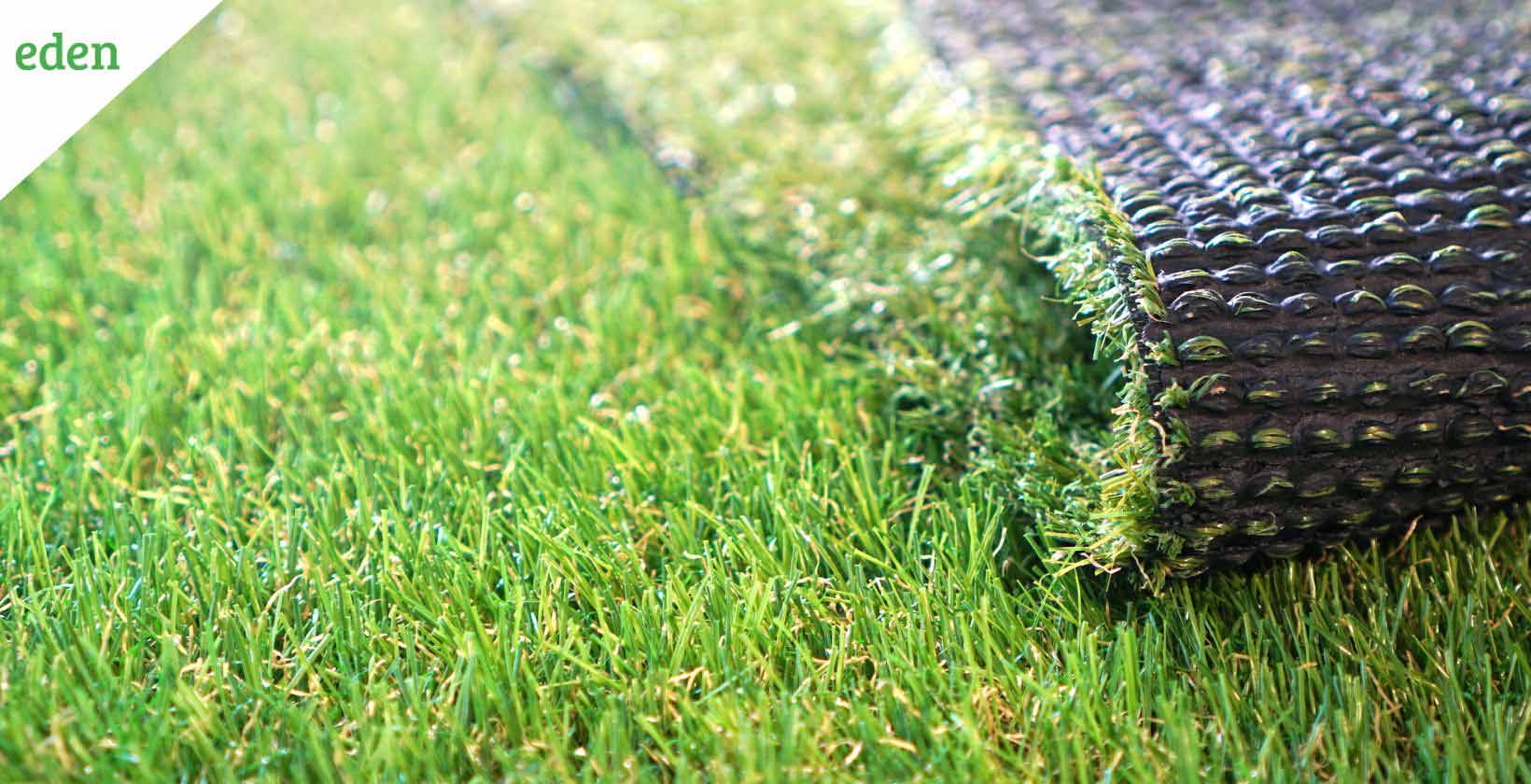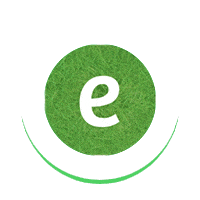
Artificial Grass vs. Natural Grass: Environmental Impact
Knowing the impact of artificial grass or natural grass on the environment is worth it. Artificial grass can be good as it saves lots of water compared to the natural grass demands. However, it creates lots of pollution during its manufacturing phase. Also, it is not biodegradable.
From selecting the right seasonal plants to installing an outdoor kitchen, our landscaping services can do it all for you. Contact us today for a stunning landscape!
On the other hand, natural grass helps the environment as it is a living thing. Also, it adds value to the ecosystem by supplying oxygen, absorbing heat and filtering pollution. On the downside, natural grass is sprayed with pesticides and supplied with ample water.
What is Artificial Grass?
Artificial grass is made up of synthetic fiber that appears like natural grass. The grass blades are available in diverse pile heights. The construction of the grass is similar to the way carpet is made. It comes with solid backing, and the blades come up with machine stitches.
These are primarily used for sports and recreation purposes. Today, homeowners have started installing artificial grass on their lawns as it offers too many benefits, including low maintenance.
What are the positive impacts of artificial grass on the environment?
There are several reasons why artificial grass is a better choice. These are simple to maintain. You do not need to mow when you have installed artificial grass in your yard. It is free from pests and bugs found around the natural grass. The realistic look it adds to the floor also makes a big difference.
Sometimes, you may find the artificial grass to appear real unless you go and feel it yourself or someone tells you about it. Some may consider that artificial grass is not safe for the environment. However, the fact is these can prove to be incredibly environmentally friendly. Artificial grass can have a positive impact on nature. We will now discuss the positive impact of this grass on the environment.
1. It conserves water
Any natural grass demands require watering. It should be at least 2-3 times per week. However, artificial grass does not need any water. The only water the grass requires is when you clean it to get rid of the debris, dust and dirt from the surface.
Some homeowners put their living plants over the perimeter of their lawn. These plants will still need water; however, the consumption is merely 10-15 percent of the water you need for any natural yard. Thus water conservation is one of the key reasons for installing artificial grass in your yard.
2. There will be no mowing or other maintenance
Artificial grass does not require mowing. It remains at the perfect length. You do not have to worry about mowing the grass or removing the weeds, as your yard is free from growth. Besides, your lawn with artificial grass will remain lush and green without water.
You do not need any other maintenance on your lawn, like adding toxic chemicals, like any lush green grass. You should not apply weed killers or pesticides to your artificial grass. All you need is an occasional cleaning of the grass to get rid of the dust and debris. Thus the maintenance of artificial grass is virtually negligible.
What are the negative impacts of artificial grass to the environment?
Let’s check the negative impacts of artificial grass on the environment.
1. More landfill
Artificial grass is made of plastic, which is harmful to our environment. The recycling process of artificial grass is complex; hence, these are often left in landfills. When you leave the fake grass as a landfill, these remain leftover and take hundreds of years to transform into bits and pieces.
These also release toxins into the environment, thus polluting the soil. Hence the process of disposing of the fake grasses is a big challenge. If these are not disposed of properly, they will worsen things badly. Most of the time, we see these transforming into massive landfills.
2. Litter in the waterways
It is alarming to see the plastic from artificial grass often end up in waterways. These contribute a lot as the waste enters the drains, which remain close to many open grounds and sporting fields. Also, these enter the oceans considerably, causing problems for marine animals.
Besides, the drains are also choked with floating plastic grass, which eventually suffocates aquatic life, including fish, ducks, turtles and even birds. The addition of litter reduces the oxygen level in the water when it finally decays.
3. Concerns about heat
The next issue with artificial grass is that it becomes hot on sunny days. The artificial turf can become like a brick wall or concrete when the temperature is high. These are made up of materials like polypropylene or nylon. Regardless of the material choice, you can experience heat on the grass surface.
Artificial grass can have more concerns about the heat during the summer days than natural grass. Experts say the high temperature can offer a couple of life-threatening heat-related illnesses to the users. Sometimes, it can end in microplastic pollution. For the usual users, the heat on the grass can add discomfort to your feet.
What is Natural Grass?
Natural grass in your lawn is a plant inhaling carbon dioxide and releasing oxygen, thus helping humans and animals. It behaves like a natural filter for any groundwater and several microorganisms, which further becomes organic waste material.
Natural grass gives too many benefits to grow on your lawn; however, the maintenance cost and efforts are higher. It adds the charm of making your lawn green to enjoy the bliss.
What are the positive impacts of natural grass on the environment?
As per reports, in the U.S. alone, it cleanses 12 million tons of air from dust annually and known impurities like carbon dioxide. It prevents soil erosion during the rainy season and even purifies the rainwater, apart from improving groundwater quality. Let’s check the impacts in detail below:
1. Air quality
Natural grass is a living organism. Your lawn of 2500 square feet in your backyard can offer ample fresh air for your four family members to breathe. The same size lawn with natural grass can give you 1500 pounds annually.
Experts claim that the strategic use of lawn grass can effectively combat the greenhouse effect in urban locations. If you are based in a big city, you are bound to be surrounded by pollution. Having a natural grass lawn can help you improve the air quality around your place.
2. Filter for pollution
Good quality natural grass can play an essential role in reducing pollution and runoff. For example, in a soccer field, it absorbs 50K gallons of water before runoff occurs. The fibrous root system stabilizes the underneath soil and reduces erosion, further preventing sediment movement into rivers and creeks.
Additional studies suggest that natural grass can also reduce noise pollution. Grass slopes around a motorway can reduce noise by up to 10 decibels.
3. Management of Stormwater
One of the vital aspects of natural grass is that it helps manage stormwater. The lawns with natural grass reduce pollutants from leaching inside the soil into the water supply or prevent them from entering surface water runoff. It offers a green grass filter that further reduces the contaminants and sediments entering water bodies.
Turfgrass plants are also known to redirect the water flow and thus reduce the water level the soil absorbs. It helps prevent flooding and soil erosion as the stormwater rushes into your yard. Any sodded and healthy lawn absorbs rainfall more than hay and wheat fields.
4. Reduces Environmental heating
The presence of natural grass helps in reducing environmental heating. On any hot summer day, properly maintained grass in your yard has the potential of reducing at least 14 degrees cooler than bare soil and 30 degrees by asphalt.
A home with a decent size lawn can have a cooling effect of not less than 9 tons of cooling effect with the air conditioner. Similarly, any basketball field can offer a cooling effect of 70 tons of air conditioning.
Is it possible to combine real and artificial grass?
To be precise, the answer is yes, and you can combine natural and artificial grass on your lawn. There are several reasons for doing this, as some of you can have a low maintenance space within your property and, simultaneously, want to enjoy the biodiversity in your yard. Regardless of the reason, the combination is possible and practical.
In conclusion, artificial and natural grass have positive and negative impacts. Artificial grass saves lots of water. However, it creates lots of pollution during its manufacturing phase, and is not biodegradable.
On the other hand, natural grass helps the environment and adds value to the ecosystem by supplying oxygen, absorbing heat and filtering pollution. On the downside, natural grass is sprayed with pesticides and supplied with ample water.
Contact Eden if you have any questions regarding installing natural or artificial grass in your lawn or yard.
From selecting the right seasonal plants to installing an outdoor kitchen, our landscaping services can do it all for you. Contact us today for a stunning landscape!

